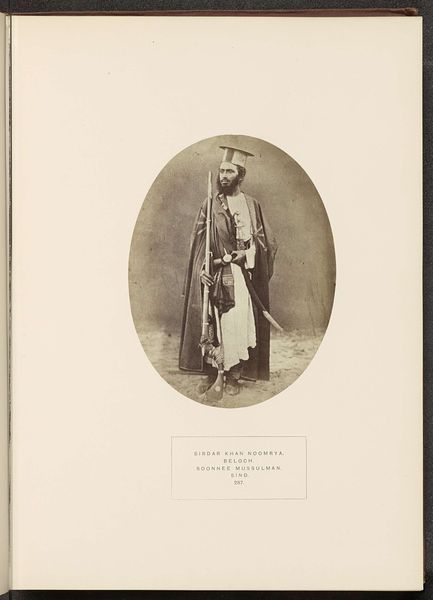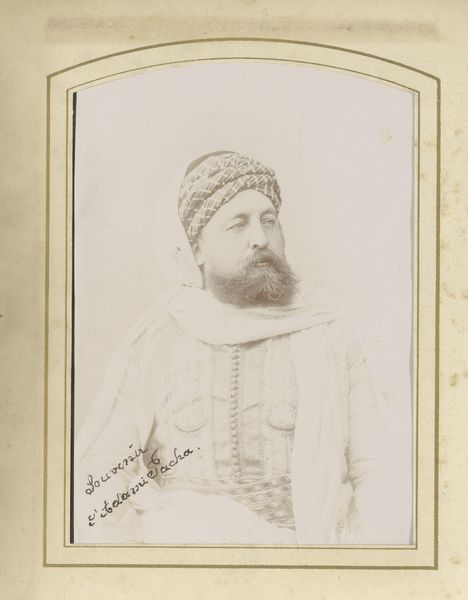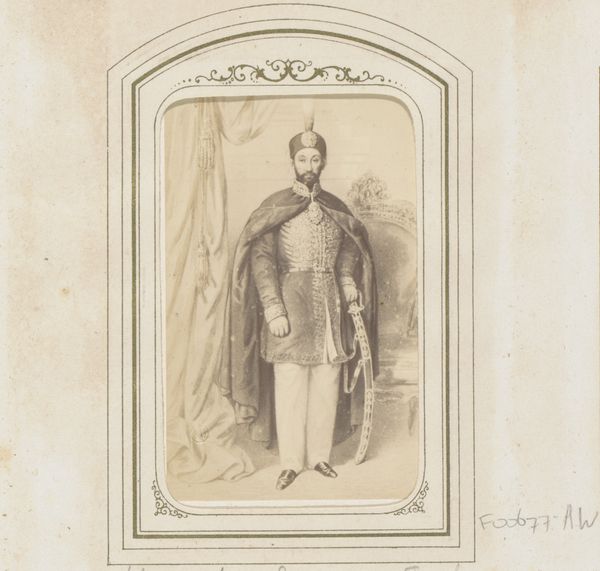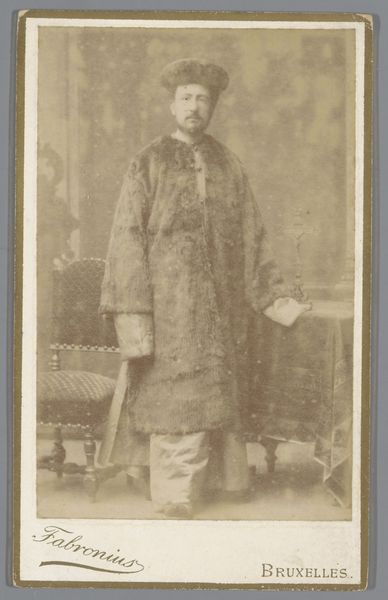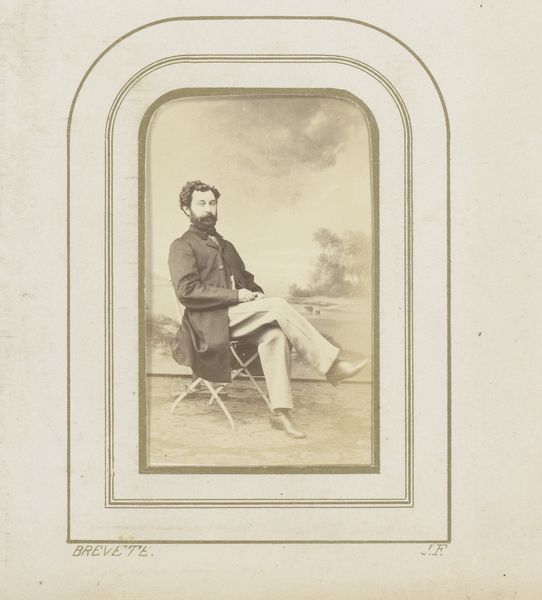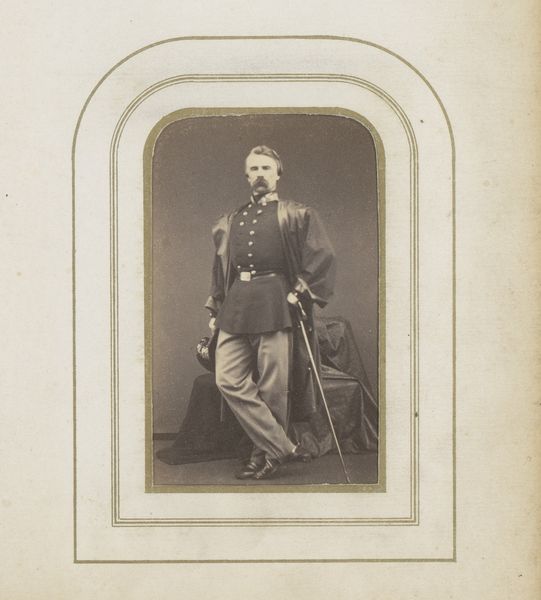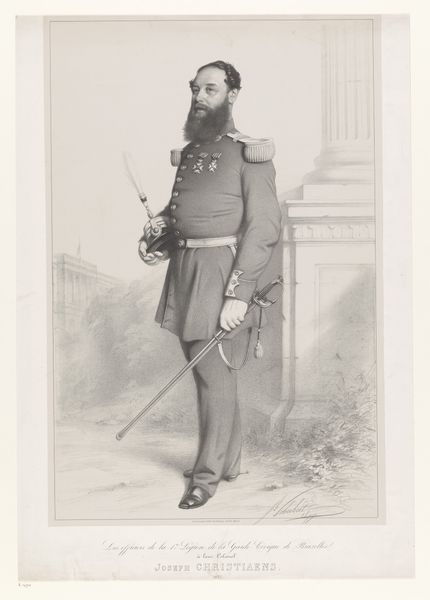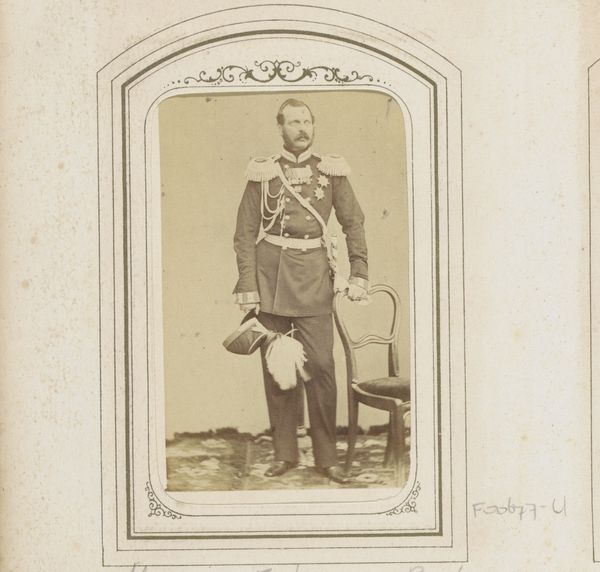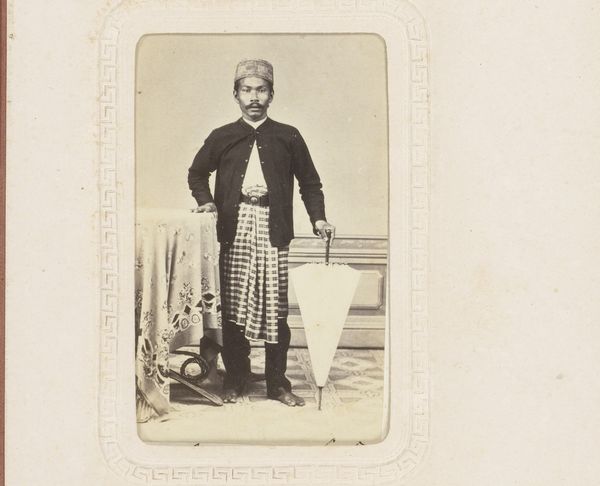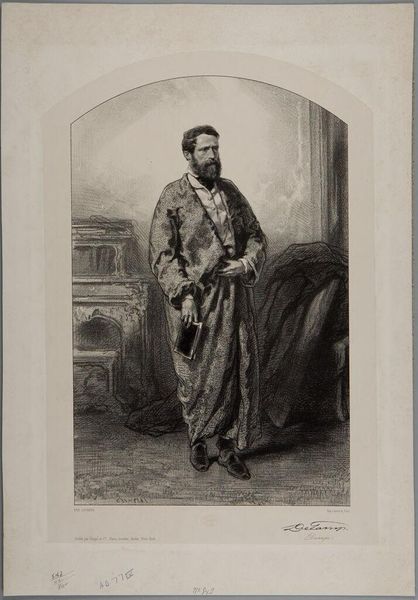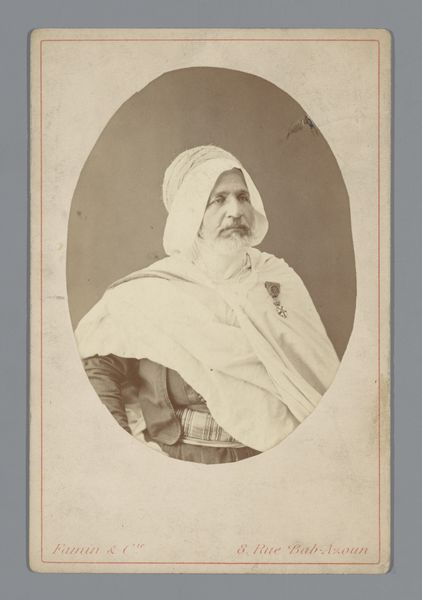
photography, albumen-print
#
portrait
#
photography
#
orientalism
#
islamic-art
#
albumen-print
Dimensions: height 86 mm, width 52 mm, height 105 mm, width 62 mm
Copyright: Rijks Museum: Open Domain
Curator: This is a portrait of Abd el-Kader, an Algerian freedom fighter, taken between 1860 and 1870 by André-Adolphe-Eugène Disdéri, rendered as an albumen print. Editor: My first impression is of serenity mixed with a certain regal melancholy. The subdued sepia tones of the albumen print give it a timeless feel. Curator: Indeed. Disdéri, known for his carte-de-visite portraits, mass-produced images that democratized portraiture. The albumen printing process involved coating paper with egg white, creating a smooth surface for detailed images. Abd el-Kader, by this time, was living in exile in Damascus. I wonder about the power dynamics inherent in capturing his image for European consumption. Editor: Precisely. This portrait, framed within the orientalist aesthetic, offers a lens through which European audiences viewed the 'Orient'. It’s impossible to separate this from France's colonial ambitions in Algeria and the subsequent romanticization of its subjects. How do you think the production and consumption of images like this fed into those narratives? Curator: It becomes a commodity, an exotic artifact. The materiality speaks of a European-driven enterprise—from the chemical processes of developing the print to the distribution networks disseminating these images across continents, constructing an idea of otherness. Disdéri’s process highlights industrial methods meeting romanticized exoticism. Editor: And el-Kader, a complex figure: a resistant, a scholar, ultimately a symbol reshaped by colonial forces and later appropriated as a symbol of national identity. I keep wondering what the cost was to obtain and distribute photographic paper; these details really color in the economics of visibility. Curator: Yes, understanding this photograph means interrogating the means of production. By doing so, we realize that photographs, like paintings, hold value far beyond face-value aesthetics, acting as potent records of power structures. Editor: A sobering thought, reframing what begins as an appealing, old-world image into a powerful testimony of a society deeply divided by imperialism. Curator: Absolutely, recognizing this allows the art to actively shape discourse. Editor: Well said, now hopefully that’s our cue to grab some tea.
Comments
No comments
Be the first to comment and join the conversation on the ultimate creative platform.


